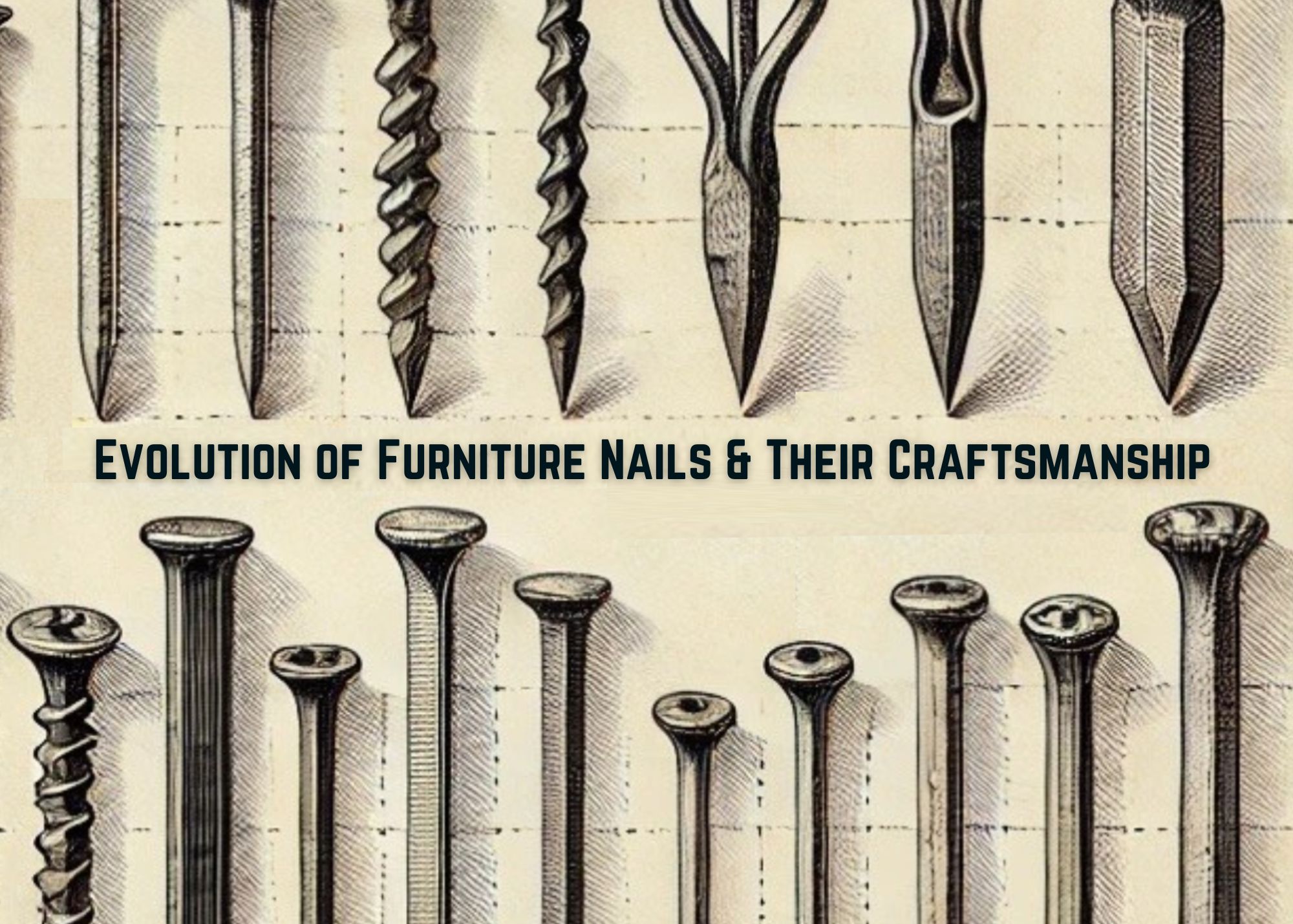From Hand-Forged to Mass-Produced: The Evolution of Furniture Nails and Their Craftsmanship
Furniture nails are more than just functional fasteners; they are clues in determining the age and authenticity of antique pieces. By examining the shape, manufacturing process, and other characteristics of these nails, you can often pinpoint the period in which a piece of furniture was made. Understanding the history of furniture nails can greatly enhance your appreciation for antique furniture.
The Evolution of Furniture Nails
Hand-Wrought Nails (Before 1800s)
The oldest type of furniture nails, hand-wrought nails, date back to before the 19th century. These nails were individually forged by blacksmiths, making each one unique. Typically, they have an irregular, square or rectangular shaft with a tapered point, and a hammered, uneven head. The rough and crude appearance of hand-wrought nails is a clear indicator of pre-1800s craftsmanship. The color of these nails is usually a dark, rusted iron hue due to the aging process.
Cut Nails (1790s – 1890s)
With the advent of mechanization in the late 18th century, cut nails became the standard. Unlike hand-wrought nails, cut nails were mass-produced by machines that cut them from a sheet of iron. These nails have a rectangular shaft with sharp edges, and the head is typically rectangular or square with a flat, more uniform surface than that of hand-wrought nails. Cut nails are often found in furniture from the 1790s through the 1890s. Their color can vary from dark iron to a dull gray, depending on the iron’s exposure to moisture and air over time.
Wire Nails (1880s – Present)
The invention of wire nails in the late 19th century marked a significant shift in furniture making. These nails are made from drawn wire and are much more uniform in shape than their predecessors. Wire nails have a round shaft and a small, round head. Their introduction in the 1880s coincided with the rise of mass-produced furniture, and they are still in use today. Wire nails are typically lighter in color, ranging from a silver-gray to a shiny metallic finish, depending on their age and exposure.
How Nails Reveal a Piece’s Age
Understanding the type of nails used in a piece of furniture can give you a rough estimate of its age. For example, if you find hand-wrought nails, you’re likely looking at a piece from the 18th century or earlier. Cut nails indicate that the piece was likely made between the late 18th century and the late 19th century, while wire nails suggest a piece made from the 1880s onward.
However, it’s important to remember that furniture repairs over the centuries might involve the use of newer nails, so examining other aspects of the piece, such as joinery, wood type, and overall design, is also crucial in determining its age.
The humble nail can be a powerful tool in unraveling the history of an antique piece. By paying attention to the details of the nails used in furniture, you can gain valuable insights into when and how a piece was made. Whether you’re evaluating a potential purchase or simply appreciating the craftsmanship of the past, understanding the history of furniture nails adds a layer of depth to your antique furniture experience.








